Figures & data
Figure 1. (A) Schematic illustration of the experimental procedure. Background colours served as verbally instructed or observed threat-of-shock or safety cues in both following memory tasks, which were performed in a randomized order. (B) In the item/source memory task, during the encoding phase, 60 pictures of male and female faces displaying neutral expressions were presented for 6 s each (variable ITI) in front of a coloured background (green or blue source) that alternated in blocks of 10 faces, each block started with a coloured frame for 3 s. Participants’ task was to memorize the faces, without a mentioning of the colours. During the recognition phase, the 60 old and 30 new faces were presented intermixed without background colours. Participants’ task was to decide whether the face was shown before and with which colour (combined old/new item and source recognition task), or whether it was not previously presented. (C) For the visual working memory task (change detection), a cue indicated the spatial location to pay attention to. In a following memory array either four or two faces were presented for 200ms. After a 900ms retention interval, participants had to decide whether a face on the arrow indicated side had changed identity or not in the test array.
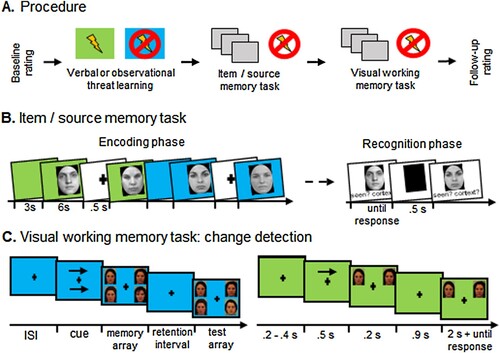
Table 1. Questionnaire data for the total sample and split by social learning factor (observation and instruction).
Figure 2. Submodel 5d of the two-high-threshold model of source monitoring. The model parameters represent transition probabilities between latent cognitive states; DT = probability of detecting that an item is old from a threatening source; DS = probability of detecting that an item is old from a safe source; DN = probability of detecting that an item is new; dT = probability of correctly remembering the shock source of an item; dS = probability of correctly remembering the safe source of an item; g = probability of guessing that an item is from the shock source; b = probability of guessing that an item is old. Adapted from Arnold et al. Citation2013; originally by Bayen et al. (Citation1996).
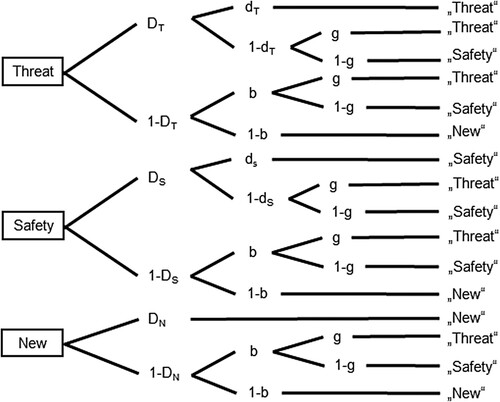
Figure 3. Illustration of the threat main effect in the encoding session of the item/source memory task. (A) Grand averaged ERPs prompted by faces presented within a threat-of-shock or safe context for an exemplary parieto-occipital sensor (PO8) and topographical difference maps (threat – safe) displaying the averaged time interval (230–300 ms) plotted on the back of a model head. (B) Grand averaged ERPs for faces presented within a threat-of-shock or safe context for an exemplary fronto-central sensor (FC1) and a topographical difference map (threat – safe) displaying the averaged time interval (472–632 ms) plotted on a top view of a model head.
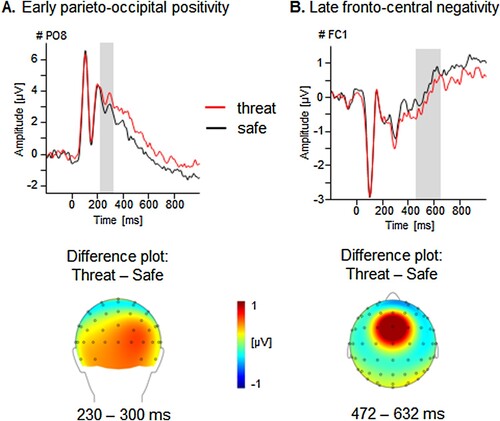
Table 2. Mean parameter estimates of the latent-trait MPT model for the recognition performance of the item/source memory task.
Table 3. Behavioural performance measures for the visual working memory task (change detection), derived from signal detection theory.
Figure 4. Illustration of the old/new recognition and contextual threat effects in the recognition session. (A) Grand averaged ERPs prompted by correctly classified old faces with correct source allocation, and new faces for an exemplary central sensor (C1) and a topographical difference map (old – new) displaying the averaged time interval (752–900 ms) plotted on a top view of a model head. Illustration of the main effect of Context in the recognition phase. (B) Grand averaged ERPs for faces which have been previously presented within threat-of-shock or safe context in the encoding session and new faces for an exemplary parieto-occipital sensor (PO4) and topographical difference maps (threat – new, threat – safe) displaying the averaged time interval (700–900 ms) plotted on a back view of a model head.
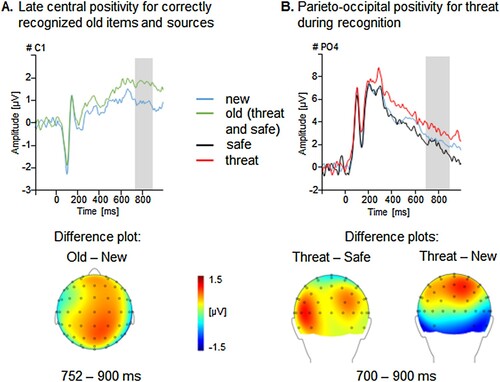
Figure 5. Visual working memory: load and context effects for N170 and CDA. Illustration of the load effect in during change detection. (A) Grand averaged N170 plotted as a function of memory load (low (1 face) vs. high (2 faces)) and Context (threat vs. safety) for an exemplary parieto-occipital sensor and a topographical difference map (high – low load) displaying the averaged time interval of peak detection (120–190 ms) plotted on a back view of a model head. Illustration of the load and context effect during change detection. (B) CDA (contralateral minus ipsilateral), recorded at the CP5-CP6 sites, time-locked to the onset of the memory array, plotted as a function of set size (one face (low load) vs. two faces (high load)) and as a function of context (threat vs. safety). Waveforms were filtered with a high cutoff filter of 10 Hz for visual inspection only. Top views of topographical maps for each experimental condition (one vs. two faces and threat vs. safety contexts) recorded during a 500–900-ms interval following the onset of the memory array.
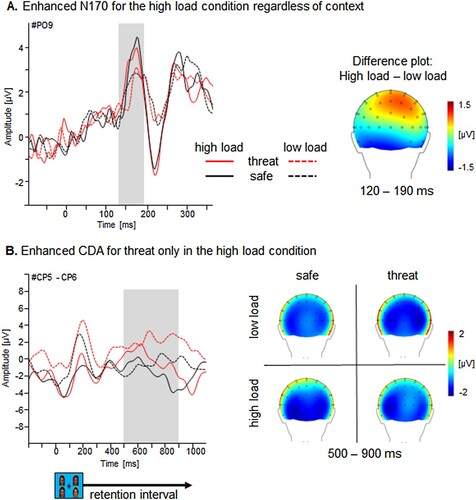
Supplemental Material
Download MS Word (93 KB)Data availability statement
The data that support the findings of this study are openly available in OSF at https://osf.io/u2nq7/?view_only = 59fd90797a184c7d8cac8ad194d20f0e.
